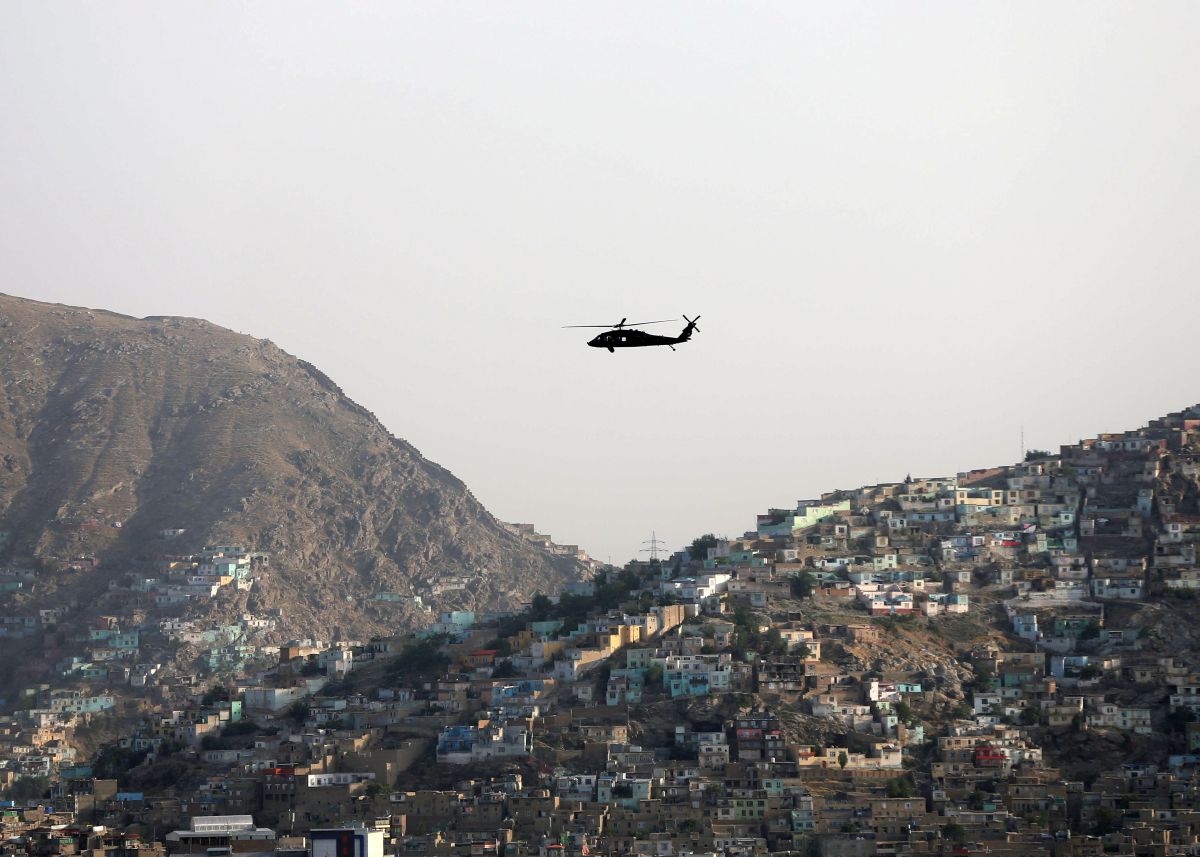Taliban Takeover of Afghanistan: Consequences for NATO
The Taliban takeover of Afghanistan will not change NATO’s overall threat perception, which will be shaped mainly by the military threat from Russia, challenges related to the rise of China, and instability in Europe’s neighbourhood. Criticism of NATO may, however, influence discussions on a new strategy, which should facilitate adaptation of the Alliance to new threat assessment. There will be increased pressure on the development of crisis-response capabilities within the coalition of the willing and the European Union.
 Fot. Omar Sobhani/Reuters
Fot. Omar Sobhani/Reuters
On 31 August, the U.S. officially ended its mission in Afghanistan after two decades. After the Trump administration signed an agreement with the Taliban in 2020, President Joe Biden upheld the decision to withdraw U.S. troops and other international forces. The only part he altered was to move the deadline for the withdrawal from 1 May to the end of August this year. In this situation, NATO, which had commanded the mission in Afghanistan since 2003, also decided to terminate its military presence. With the Taliban offensive ongoing, the Allies expected a deterioration in security and announced support for Afghanistan to make it difficult for the insurgents to take power and force them to negotiate with the government. At the NATO summit in Brussels in June, the allies announced financial and training assistance for the Afghan security forces as well as support for the management of Kabul airport. The rapid collapse of the state structures took NATO by surprise. When on 15 August the Taliban entered the capital, the Allies had to begin a hasty evacuation of their citizens, along with Afghans who had worked for coalition forces and other citizens endangered by repression. As most countries had already withdrawn their troops, the U.S. increased the number of soldiers in Afghanistan from around 1,000 to 6,000 to facilitate the evacuation and to secure Kabul airport. Responsibility for the protection of the airport was also taken by British (about 1,000 soldiers) and Turkish forces (around 500 soldiers, supported by a unit from Azerbaijan). Elements of the multinational NATO response force (NRF) were also used. The responsibility for evacuation rested mainly with the individual allies, who had to provide air transport, diplomatic personnel, and protection. Some countries tried to persuade the U.S. to extend the deadline, but President Biden refused, reportedly because of the agreement with the Taliban and the threat of terrorism. The latter threat materialised with an attack by ISIS-K that killed 13 American troops and more than 150 civilians. In total, more than 120,000 people were evacuated, including 2,000 who worked directly for NATO structures
Short-Term Challenges for the Alliance
Some countries were unable to evacuate all their citizens and eligible Afghans by the deadline. NATO, together with the EU and nearly a hundred nations, called on the Taliban to facilitate their evacuation. Some countries, including the U.S. and the UK, continued evacuations through neighbouring countries or on sporadic commercial planes from Kabul.
The chaotic ending of the missions and the problems with the evacuation sparked political tensions in some Alliance countries. Under the strain of criticism, there have been changes in some governments, including in the Netherlands (dismissal of the ministers of foreign affairs and defence) and UK (change of minister of foreign affairs). Hearings on the withdrawal and evacuation have begun in the U.S. Congress. The United States has been criticised in some countries for a lack of consultations with allies about the end of the mission. Critics say that by setting a specific withdrawal date, NATO lost leverage against the Taliban, increasing the risk that they would take power by force. It is argued that it was enough to maintain a small international contingent to prevent the collapse of state structures. Despite this criticism, NATO managed to avoid major tensions. The allies supported each other in the evacuation and coordinated activities related to the relocation of refugees. At the request of the United States, a number of countries, including Poland, agreed to support the U.S. with the relocation efforts of Afghans who worked for the American government.
NATO members expect that the repressive Taliban rule, human rights abuses, and economic collapse will trigger a humanitarian crisis in Afghanistan, which may lead to a refugee crisis. To reduce such risks, the allies are trying to influence the Taliban by supplementing the threat of sanctions with incentives, such as establishing diplomatic relations with the regime or humanitarian aid for Afghans. Some countries have already decided to provide such aid through the UN and the EU. This support, however, does not offset the aid previously provided to Afghanistan, including by NATO.
Long-Term Consequences for the Alliance
The way the mission in Afghanistan ended exposed the U.S. and NATO to criticism that the goals of the mission had not been achieved. President Biden and NATO Secretary General Jens Stoltenberg refuted the allegations and stated that the allies had succeeded in the objective, which was to deprive Al-Qaida of a safe haven in Afghanistan and prevent further 9/11-style attacks. Nevertheless, the members of the coalition invested considerable time and effort in building state structures in Afghanistan. Their collapse undermines the credibility of NATO’s crisis-response capability and will hinder its use in future crises. Stoltenberg admitted that the Alliance will have to conduct an in-depth analysis of the Afghan mission and draw conclusions for the future.
The Taliban takeover of Afghanistan increases the risk that the country will once again become a safe haven for terrorist organizations targeting the U.S. and its allies. Even if the Taliban considers ISIS-K an enemy and does not cooperate with Al-Qaida, it may not be able to stop their activities on Afghan territory. Although the U.S. has assured that after its withdrawal from Afghanistan it will be able to effectively fight the terrorist threat (over-the-horizon capability), carrying out such operations will more difficult than in the past.
Another consequence of the chaotic end of the mission is the revival of the discussion about a European army—European crisis-response forces—which would allow European states to operate independently of the United States. There are arguments that the Allies were unable to continue their mission in Afghanistan after the withdrawal of U.S. troops because they did not have adequate logistical capabilities. The decision to withdraw completely from Afghanistan has also become a pretext for calling into question the American security guarantees for its allies. Russia and China are already trying to use the Taliban’s success in propaganda attacks on NATO. Both countries point to the crisis in Afghanistan as proof of U.S. weakness and a failure of the Alliance.
Conclusions and Perspectives
Afghanistan will continue to attract the attention of NATO countries in the coming months. It should be a priority to complete the evacuation of allied citizens and Afghans who worked for international forces. The Allies should also try to develop mechanisms for the distribution of humanitarian aid to Afghans that bypasses the regime. To gain maximum influence with the Taliban, NATO should coordinate with the EU, the UN and other organisations.
The Taliban takeover will not change the threat perception of the Alliance, which in the long run will be shaped mainly by the military threat from Russia, the rise of China, and instability in Europe’s neighbourhood. The Allies will want to maintain the current level of ambition, which should make it possible for NATO to conduct collective defence and crisis-response missions at the same time. From the Polish perspective, the benefits of the decision to end the mission to Afghanistan may be regarded as positive if it facilitates the development of Allied potential for the needs of collective defence and deterrence missions. Criticism of NATO may, however, be used to undermine the credibility of the Alliance and influence the discussion on the new strategy to be adopted in 2022, which should adapt NATO to a new threat assessment. Due to the U.S. shift of strategic focus to the Indo-Pacific, the Alliance will have to not only strengthen its defence and deterrence capabilities but also its ability to stabilise security in its neighbourhood, primarily through cooperation with partners. NATO’s internal report on the mistakes made during the mission in Afghanistan may increase the effectiveness of such involvement. At the same time, the change in U.S. and NATO priorities and the reluctance to use the NATO Response Force for crisis management will increase the importance of coalitions of the willing for such purposes (British JEF forces and the French E2I initiative). There also will be increased pressure for the creation of an EU rapid reaction force (entry force), which could replace the never-used EU Battle Groups.


